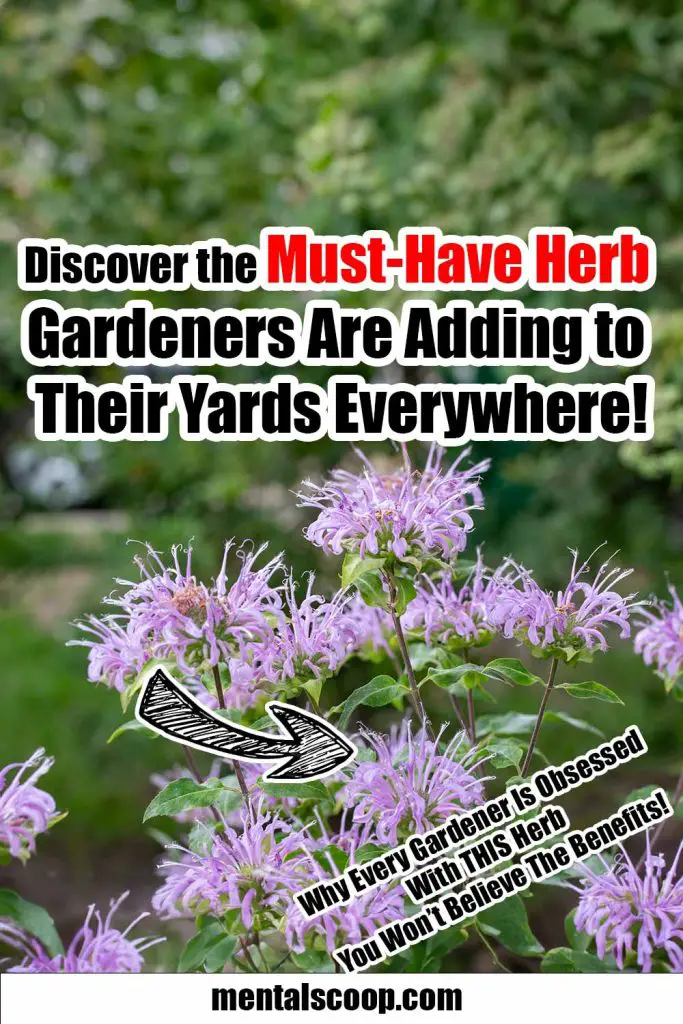Discover the Must-Have Herb Gardeners Are Adding to Their Yards Everywhere!

Gardening has exploded in popularity over the past few years, with many turning to it not only for relaxation but also for self-sufficiency. But there’s one herb that stands out from the rest, catching the attention of green thumbs everywhere.
Whether you’re a seasoned gardener or just getting started, this herb is making its way into yards across the country.
If you’re wondering what it is and why it’s gaining so much attention, keep reading as we dive into its benefits, growing tips, and how you can incorporate it into your garden for a more flavorful and fragrant space!
Introducing The Must-Have Herb: Lemon Balm
The star of this gardening trend is none other than lemon balm (Melissa officinalis). This perennial herb, a member of the mint family, is loved for its mild citrusy scent, ease of care, and variety of uses.
Its soft green leaves release a refreshing lemon aroma, making it a favorite not only for culinary purposes but also for its role in natural remedies.
Lemon balm is an herb that has been used for centuries, yet it’s recently enjoying a resurgence in popularity for home gardeners. Its versatility and charm have earned it a place as a must-have addition to any backyard herb garden.
Why Lemon Balm? The Benefits That Are Winning Over Gardeners
So, why is lemon balm becoming such a popular choice? It all boils down to the herb’s incredible versatility and benefits. First, lemon balm has natural calming properties, making it an excellent herbal remedy for stress, anxiety, and insomnia.
Many gardeners use it to brew soothing teas or infuse oils for a calming scent. Lemon balm also works wonders in the kitchen, bringing a bright, zesty flavor to dishes.
And for those with an eco-friendly mindset, it serves as a natural insect repellent, keeping mosquitoes and other pests at bay without chemicals.
Lemon Balm’s Rich History And Medicinal Uses
Lemon balm isn’t new on the scene. It has been cultivated since ancient times for its medicinal benefits. In ancient Greece and Rome, healers used it to reduce fevers, soothe wounds, and uplift the spirit. Even during the Middle Ages, it was prized for its ability to promote longevity and vitality.
Today, it’s commonly used in herbal remedies for digestive issues, headaches, and cold sores. Gardeners love growing this herb because it connects them to a long tradition of natural healing and self-care, all from the convenience of their backyard.
How To Grow Lemon Balm: Easy Steps For A Thriving Garden
Lemon balm is incredibly beginner-friendly, making it a perfect choice for those who are new to gardening. It grows well in a variety of conditions but prefers a spot with full sun to partial shade. The soil should be well-drained, and while it loves water, it’s relatively drought-tolerant once established.
If you’re starting from seed, it takes around 10 to 14 days for germination. Lemon balm can also spread quickly, so keep this in mind if you want to contain it to one section of your garden. Many gardeners opt to grow it in containers to keep it from overtaking other plants.
Companion Planting With Lemon Balm
Incorporating lemon balm into your herb garden can actually benefit other plants. Companion planting is the practice of growing different plants near each other to boost growth, deter pests, or improve flavor.
Lemon balm is an excellent companion for plants like tomatoes, lettuce, and cabbage because it attracts beneficial insects like bees and helps deter aphids and whiteflies.
Additionally, planting it near fruit trees or flowering plants can enhance pollination, making your garden a thriving ecosystem. Its adaptability and compatibility make it the perfect neighbor in any garden bed.
Creative Ways To Use Lemon Balm In Your Kitchen
Lemon balm’s citrusy, minty flavor opens up a world of culinary possibilities. Its fresh leaves can be used to flavor salads, soups, and marinades, adding a subtle lemon flavor without being overpowering. It’s also a favorite for tea lovers.
A handful of leaves steeped in hot water creates a refreshing, calming tea that can be enjoyed hot or iced. Bakers enjoy using lemon balm in desserts like cookies and cakes for a hint of lemon flavor that pairs beautifully with other sweet ingredients.
You can even use it in cocktails or mocktails for an extra splash of freshness.
Herbal Teas And Wellness: The Power Of Lemon Balm
One of the most popular ways to use lemon balm is in herbal teas, thanks to its calming effects. Just pluck a few leaves, steep them in boiling water, and enjoy a relaxing tea that helps to ease anxiety, improve sleep, and support digestive health.
Some gardeners love drying their lemon balm leaves to create custom herbal tea blends with other homegrown herbs like chamomile, lavender, or mint. The combination of these herbs creates a potent wellness tea that promotes relaxation and mental clarity.
Lemon balm tea has been a go-to remedy for generations, and now, it’s making a comeback.
The Perfect Addition To Pollinator Gardens
If you’re passionate about creating a pollinator-friendly garden, lemon balm is a great herb to plant. Its small, pale flowers attract bees, butterflies, and other beneficial insects that help pollinate your garden.
Bees, in particular, are drawn to its fragrant leaves, and planting lemon balm can help support declining bee populations by providing them with a steady source of nectar.
Gardeners who are interested in sustainable gardening or beekeeping find lemon balm to be a valuable asset for encouraging a healthy ecosystem in their yards.
Harvesting And Preserving Lemon Balm: Tips For Year-Round Use
Lemon balm is a fast grower, so you’ll likely find yourself harvesting leaves frequently throughout the growing season. The best time to harvest is just before it flowers, as this is when the oils are at their peak concentration, delivering the most flavor and aroma.
After harvesting, you can either use the leaves fresh or dry them for later use. To dry lemon balm, simply hang small bunches in a well-ventilated, shady area.
Once fully dried, store the leaves in an airtight container for use throughout the year in teas, cooking, or even homemade beauty products like lotions and balms.
Why Lemon Balm Deserves A Spot In Your Garden
There’s no question that lemon balm is the must-have herb gardeners are adding to their yards everywhere. From its easy growth habits to its wide array of uses in the kitchen and for wellness, it’s no wonder this ancient herb is making a modern comeback.
Whether you’re looking to create a calming tea, improve your garden’s pollination, or keep pesky bugs at bay, lemon balm has you covered. Best of all, it’s a low-maintenance herb that rewards you with fragrant leaves, beautiful blooms, and countless benefits.
So, if you’re thinking about expanding your herb garden, make sure lemon balm is at the top of your list. You’ll be glad you did!

More interesting articles you may be interested in reading:

